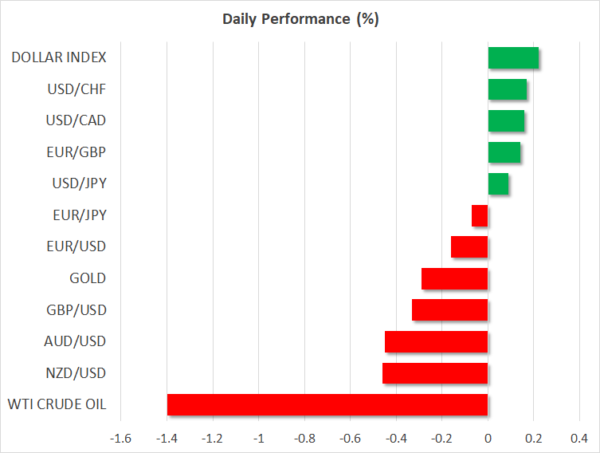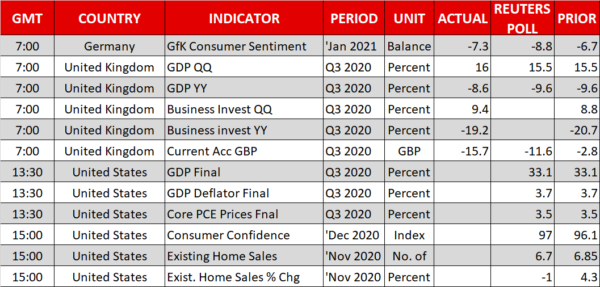- Sharp selloff turns into sharp rebound as UK waters down fishery demands
- US stocks and sterling stage epic comeback, close only a blip lower
- Similar story for the dollar, surrenders most virus-mutation gains
- Vaccines and liquidity are still the name of the game
What selloff? US equities and sterling roar back
Just when you think US stocks can bleed, dip-buyers return with a vengeance. The week kicked off with a substantial correction, the S&P 500 falling almost 2% amid worries around a mutation of the coronavirus that is spreading like wildfire in Britain, but the market staged an epic turnaround to close just 0.4% lower. The British pound saw a similar roundtrip, with Cable erasing heavy losses to finish only a blip lower.
The comeback was based on two pillars: signs of progress in the Brexit crusade and hopes that the existing vaccines will work against the new virus strain. On Brexit, the UK watered down its demands on fisheries, offering the EU greater access to its waters. Even though Europe quickly shot down the new proposal as insufficient, investors saw this as a steppingstone towards a real compromise soon.
On the virus, the question was always whether this new, more infectious strain, would be resistant to the existing vaccines. If vaccines work against it, then this is only a road bump in the journey towards a post-vaccine world. As such, investors breathed a sigh of relief when the White House vaccine chief told the media yesterday that there is an ‘extremely low’ chance the Pfizer and Moderna vaccines won’t work.
In the bigger picture, there’s another even bigger pillar keeping a floor under asset prices, and that is the force of tremendous liquidity by central banks and extravagant government spending. If this year has taught us anything, it is that when monetary and fiscal policy join forces to fight a crisis, financial markets are happy to turn a blind eye to any risks that are not catastrophic. So long as the endgame is a vaccinated world, the market is willing to look through a hellish winter.
Dollar loses its shine, but can the euro keep going?
The turnaround was also evident in the dollar, which roared higher as virus fears escalated, only to come crashing down once nerves cooled. The reserve currency is still a tad higher against its commodity-linked peers though, especially the loonie, which is weighed down by the inability of oil prices to recover. Crude oil may be the real barometer of short-term economic prospects, as the new covid strain will inevitably hit demand.
By the same logic though, you have to wonder how much further the euro rally can go, given the darkening prospects for the Eurozone economy. This new strain has already been identified in other European nations, making it even harder for governments to relax the ongoing lockdowns.
For now, how the Brexit saga concludes will be the most crucial variable for the euro and the pound, but at some point, relative economic performance is bound to come into play. If the Eurozone and Britain are forced to play the rolling shutdown game until the vaccines are fully deployed, then the popular narrative for a weaker dollar into 2021 may come under heavy fire as America heals its economic wounds faster.
Calendar almost empty, focus on Brexit
It is a quiet day in terms of economic releases. The highlight will probably be the US consumer confidence print for December. The final estimate of third-quarter GDP is ancient history by now.
Instead, the main spot to watch is Brexit. If a deal lands soon with liquidity being scarce because of the holiday season, the ensuing sterling rally could be explosive, and spill over into other risk-linked assets.
On the stimulus front, the US Senate has approved the covid relief bill, and President Trump is expected to sign it today.
















